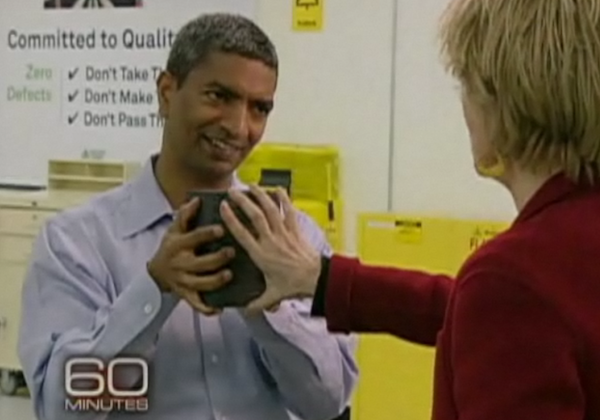Bloom Box - home power station

These two dice are capable of producing enough electricity for the needs of an ordinary American home, and for the European one is enough. So said K. R. Sridhar, the founder of Bloom Energy, in the “60 minutes” program last night. The technology was developed for the Mars Program of NASA, and to adapt it for everyday needs, it took $ 400 million of investment. In the development of Bloom Energy, oxygen is in one part of the cube, the so-called. cell interacts with the fuel - natural gas or biogas - located in another part, and releases the necessary energy. The cells are ordinary ceramic discs, covered with a secret composition of green on one side and black on the other, which are separated by a layer of inexpensive metal and stacked - a stack of 64 discs can provide energy for a small Starbucks-type establishment.
For skeptics: these devices, but the size of a refrigerator, are already used for industrial needs. Such cells cost from 700 to 800 thousand dollars and are used, for example, in the companies FedEx, Wal-Mart. Google was the first, and already uses the Bloom Box to power the data center for at least 18 months. Ebay placed these devices on the lawn in front of the San Jose office and receives up to 15% of the required energy from them, saving $ 100,000 from the moment they were installed 9 months ago. Bloom Energy releases approximately one Bloom Box per day and hopes to bring the cost of the device up to 3 thousand dollars over 5 to 10 years, which will make it possible to use it everywhere.
A source:
www.engadget.com/2010/02/22/the-bloom-box-a-power-plant-for-the-home-video
www.cbsnews.com/stories/2010/02/18/60minutes/main6221135.shtml
UPD
Information about the company:
investing.businessweek.com/research/stocks/private/snapshot.asp?privcapId=28543927
')
Their website:
www.bloomenergy.com
We are waiting for a couple of days.
Source: https://habr.com/ru/post/85196/
All Articles